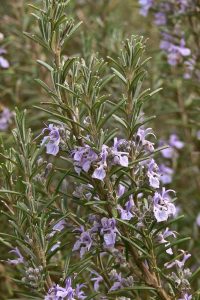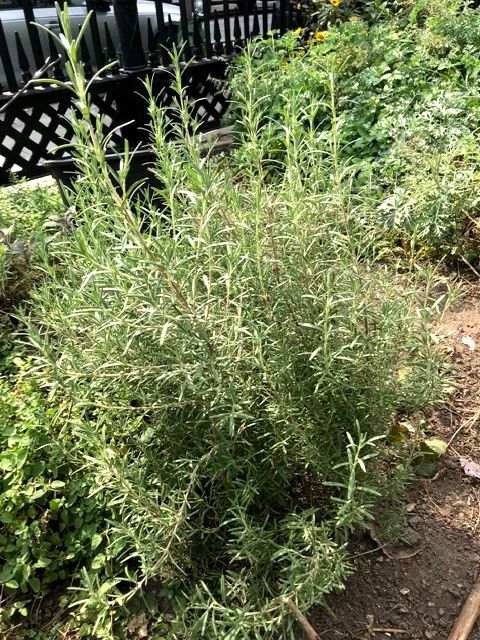Rosemary is an herb with fragrant, evergreen needle-like leaves native to the Mediterranean. White, purple, blue, or pink flowers bloom on the plant in temperate climates, but it can sometimes also bloom unexpectedly in the dead of winter. Its name is derived from the Latin ros marinus, or “rose of the sea,” because it thrives at low altitudes, which are associated with the seaside. The plant is hardy; it can survive extended droughts and cold temperatures, and can live for about 30 years.
The first mention of rosemary was found on cuneiform tablets from the Ancient Near East in 5000 BCE. It was considered sacred by the ancient Egyptians, Greeks, and Romans and was extensively written about in ancient texts. The plant made its way to China in the third century, then Europe around the eighth century, and was eventually brought to the Americas by settlers and traders in the seventeenth century.
Throughout its history, rosemary was heavily associated with promoting memory and mental clarity. Ancient Egyptians placed rosemary in tombs and used them in bouquets of funeral flowers and embalming practices in order to remember the dead. Students in ancient Greece wore garlands of rosemary around their necks, or braided it into their hair to improve their memory during exams. Others would place it in their pillow the night before to enhance memory during sleep. Rosemary was also heavily used in weddings to help memorialize the occasion. It was incorporated in a bride’s adornments and added to the couple’s wine to help them remember their vows to each other. Quite famously, in William Shakespeare’s Hamlet, Ophelia says, “There’s rosemary, that’s for remembrance. Pray you, love, remember.” Today, rosemary is still used to promote mental health and memory, in addition to other medicinal uses, such as hair growth, muscle relief, and skin hydration. However, the scientific weight of these claims are still being analyzed.
 Rosemary continues to have a plethora of uses. It is used for decoration because of its hardiness, bright flowers, and ability to be pruned into various shapes. It also repels pests, such as cockroaches, mosquitoes, slugs, and snails. But it is perhaps most widely used for consumption as a seasoning for meat, vegetables, fish, soup, salads and more. It has a slightly minty, sage-like, peppery taste with a bitter, woody aftertaste and adds character to meals.
Rosemary continues to have a plethora of uses. It is used for decoration because of its hardiness, bright flowers, and ability to be pruned into various shapes. It also repels pests, such as cockroaches, mosquitoes, slugs, and snails. But it is perhaps most widely used for consumption as a seasoning for meat, vegetables, fish, soup, salads and more. It has a slightly minty, sage-like, peppery taste with a bitter, woody aftertaste and adds character to meals.
Nestled in one corner of our park is an herb garden with rosemary, mint, thyme, and other plants. Although the section is small and to the side, it still remains “memorable.”


